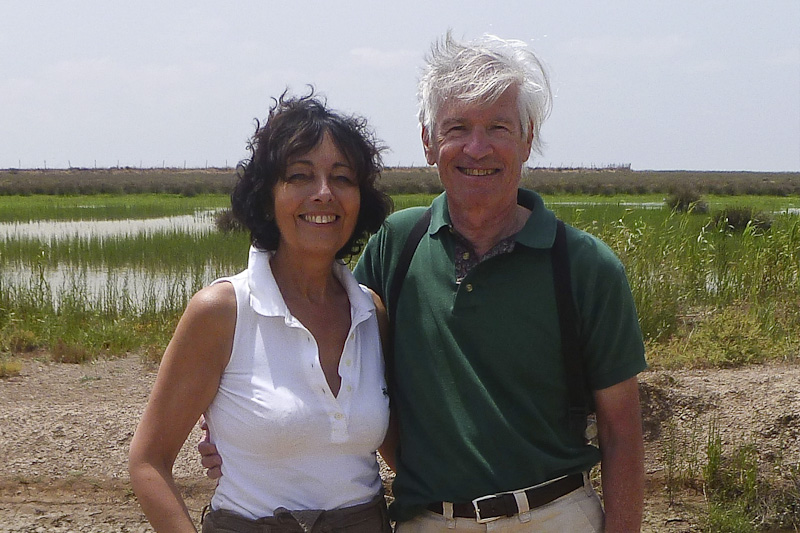 Jean-Michel Paulus, a hematologist, and Micheline Paulus-Jacquemin, an ophtalmologist, have graduated from the University of Liège, Belgium. Traveling in all five continents, they have selected bird photos representative of the 40 currently described bird orders, with the purpose of providing an illustrated overview of bird evolution.
Jean-Michel Paulus, a hematologist, and Micheline Paulus-Jacquemin, an ophtalmologist, have graduated from the University of Liège, Belgium. Traveling in all five continents, they have selected bird photos representative of the 40 currently described bird orders, with the purpose of providing an illustrated overview of bird evolution.
Heartfelt thanks are extended to Patrick Cardwell (Avian Leisure, ZA) for his expert guiding to the birds of South Africa and Namibia. We also thank Dr Danielle Hock, for her photos of Madagascar and the Antarctica, Alberto Garcia Rios for his photo of a Cuckoo Roller, Nick Athanas for his Red-legged Seriema, Ben Rackstraw for his Sub-desert Mesite and Alastair Rae for his Sunbittern. Appropriate references are given in the texts on these species.
All photos have been taken in natural settings, with a half dozen exceptions duly indicated in the text. They include Emu (Farm at Murchison, New Zealand), Brown Kiwi (Courtesy of P. Jouk, Antwerp Zoo, Belgium), Southern Cassowary (Pairy Daiza Park, Brugelette, Belgium) and Tawny Frogmouth (Planckendael Park, Belgium).
For the scientifically inclined reader, we summarize the principles on which recent bird classifications have been based.
Bird classification The modern paper on bird evolution is by Hackett SJ et al (2008): Phylogenomic Study of Birds. Their phylogenomic classification of 171 species representing nearly all nonpasserine families, all major passerine clades and two crocodilian outgroups uses 19 aligned nuclear DNA sequences from 15 different chromosomes in the chicken genome. Figures 2 and 4 offer their view of bird order classification, which has been adopted in this site. Using these and other data, the International Ornithology Committee (IOC) has edited an updated classification of World Bird Names by Gill F, Donsker D (eds), (2012): IOC World Bird List. Within each order, their family classification has been used in this site. Also a detailed hierarchy of present day orders is available at Boyd J (2012): Bird Taxonomy. Five of their cladograms were reproduced in the related texts.
Cladistic analyses and phylogenomics Compared to morphological characters, nuclear DNA sequences have significant advantages. Each nucleotide in a given sequence can be considered an independent character which can be used for classification. The common ancestor of a lineage and its progeny can be identified by deducing a primitive nucleotide sequence and the derived character states which originated from it. Articles on cladistic analysis and phylogenomics are cited in the paper by Hackett et al and its supporting on line material as well as in Cladistics and in Cladistics and Classification.
Texts from the Wikipedia, the Encyclopædia Britannica (2012) have been much quoted in this site. Comments are continually added to photos, often borrowed from bird guides of Southern Africa (Sinclair I et al), East Africa (Stevenson T, Fanshawe J), Australia (Morcombe M), New Zealand (Robertson H et al), Europe (Mullarney K et al, Heinzel H et al), North America (Peterson RT; Sibley DA; Dunn JL, Alderfer J), West Indies (Raffaele H et al), Costa Rica (Stiles FG, Skutch AF; Garrigues R, Dean R), Peru (Schulenberg TS et al), Chili (Jaramillo et al) and Borneo, Sumatra, Java and Bali (MacKinnon J, Phillipps K). Other comments are taken from "Bird, The Definitive Visual Guide (DK Publ, New Tork)".